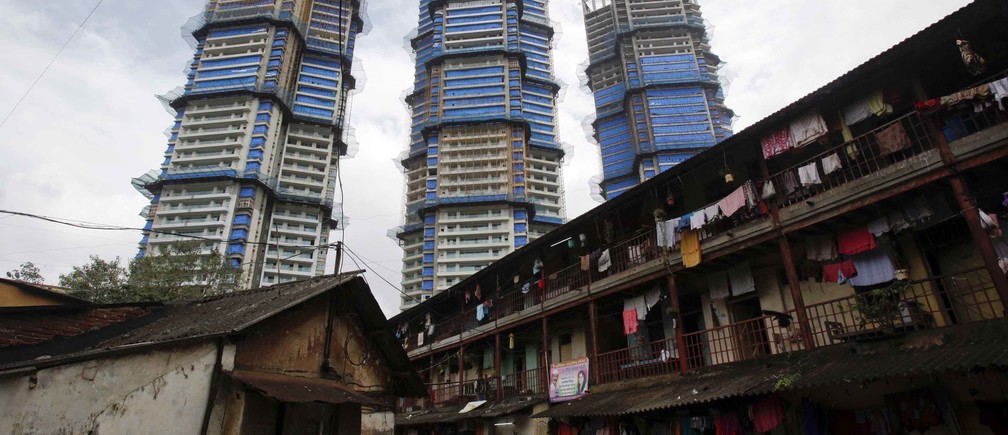World Inequality Report 2018
July 23, 2018 | Expert Insights

A team led by French economist Thomas Piketty recently published the World Inequality Report 2018.
The report outlines that inequality has been steadily deepening within almost every nation and suggests the importance of institutional and policy frameworks in shaping inequality.
Background
Economist Barry Eichengreen has identified six first-order processes at work over the past 250 years to understand the history of global inequality. These include the widening of Britain’s income distribution between 1750 and 1850, as the gains from the British Industrial Revolution went to the urban and rural middle class, but not to the urban and rural poor.
Between 1750 and 1975, income distribution also widened globally, as some parts of the world realized gains from industrial and post-industrial technologies, while others did not. For instance in 1800, American purchasing power parity was twice that of China; by 1975 it was 30 times that of China.
The First Age of Globalization, between 1850 and 1914, when living standards and labor productivity levels converged in the global north. During this time, 50 million people left an overcrowded agricultural Europe for resource-rich new settlements. They brought their institutions, technologies, and capital with them, and the wage differential between Europe and these new economies shrank from roughly 100% to 25%.
In the Gilded Age, between 1870 and 1914, domestic inequality rose in the global north as entrepreneurship, industrialization, and financial manipulation channeled new gains - mostly to the wealthiest families. Gilded Age inequality was significantly reversed during the period of social democracy in the global north, between 1930 and 1980, when higher taxes on the wealthy helped pay for new government benefits and programs. Contemporary economic policy choices have again resulted in a widening of the distribution of gains in the global north, ushering in a new Gilded Age.
Thomas Piketty is a French economist whose work focuses on wealth and income inequality. He is a professor at the School for Advanced Studies in the Social Sciences (EHESS). The World Inequality Report is written and co-ordinated by Facundo Alvaredo, Lucas Chancel, Thomas Piketty, Emmanuel Saez and Gabriel Zucman. It aims to contribute to a more informed global democratic debate on economic inequality by bringing the latest and most complete data to the public discussion.
Analysis
According to the World Inequality Report 2018, income inequality varies greatly across regions. It is lowest in Europe with the share of total national income accounted for by the top 10% earners at 37% . It is highest in the Middle East with 61%.It is 55%in Sub-Saharan Africa, Brazil and India.
The report has mapped income inequality since 1980 and found that it has increased rapidly in North America, China and India and grown moderately in Europe. The increase in inequality marks the end of a post war egalitarian regime which took different forms in these regions. However, the exceptions to this pattern are formed by the relative stability in inequality in the Middle East, Sub-Saharan Africa and Brazil. These regions also set the world ‘inequality frontier.’
The different trajectories followed by countries like India, China and Russia reflect the different types of deregulation and opening-up policies adopted by them in the past- decade. However, the divergence in inequality levels has been particularly extreme between Western Europe and the US. They both had similar levels of inequality in the 1980s but today the top 1% income share was 12% in Europe but 20% in 2016 in the US.
The income-inequality trajectory observed in the US is largely due to massive educational inequalities, combined with a tax system that grew less progressive, the report notes. In Europe and the US, income inequality between men and women has declined but remains particularly strong at the top the of the distribution.
The poorest half of the global population has seen its income grow significantly since 1980s due to high growth in Asia. However, due to high and rising inequality within countries, the top 1% richest individuals in the world captured twice as such growth as the bottom 50% individuals since 1980. The report finds that the rise in global inequality has not been steady. The trend break in global inequality after 2000 is due to a reduction in between-country average income- inequality, as within- country inequality has continued to increase.
According to the report, inequality in India has risen substantially from the 1980s onwards, following profound transformations in the economy that centred on the implementation of deregulation and opening-up reforms. The report noted that the temporary end to the publication of tax statistics between 2000–2010 by the Indian government highlights the need for more transparency on income and wealth statistics that track the long-run evolution of inequality.
Assessment
Our assessment is that global inequality has not witnessed a drastic reduction across regions since the 1980s. We feel that countries need to establish national policies and institutions that aid in bridging the inequality gap. We believe that in this era of globalization, innovative ways of tackling the rise in inequality need to be formulated.








Comments